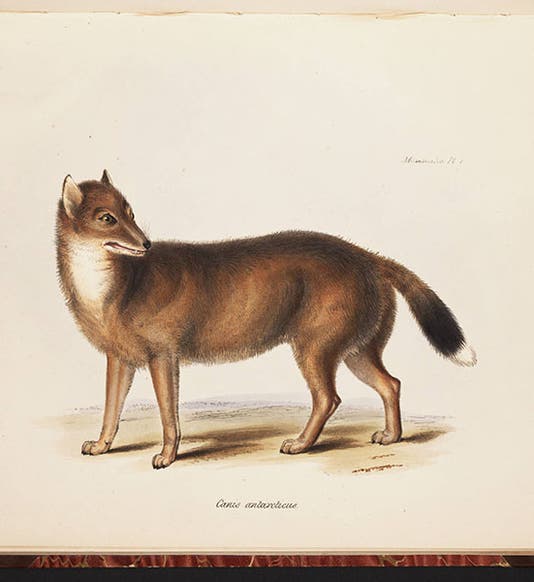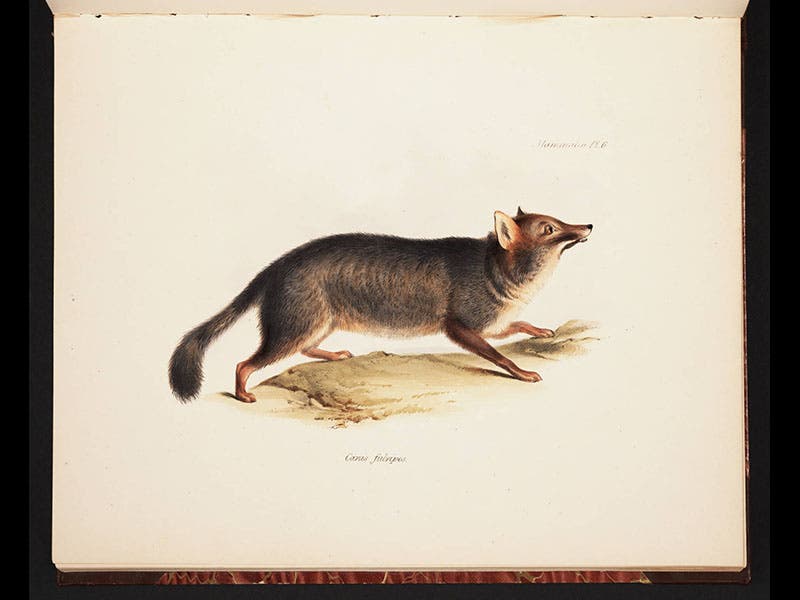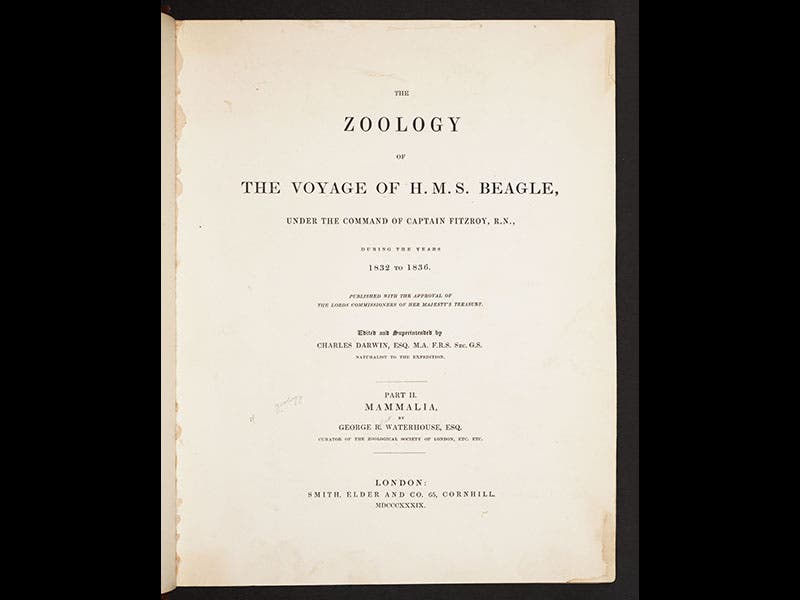Scientist of the Day - George Robert Waterhouse
George Robert Waterhouse, an English zoologist, was born Mar. 6, 1810. Waterhouse had two specialties, oddly incongruous: insects, and mammals. He was the only bug man that Charles Darwin really respected, and when Darwin returned from the Beagle voyage in 1836, Darwin chose Waterhouse as the man to receive his collection of beetles (Darwin had been passionate about beetles since his college days). For various reasons, a description of the beetles was never published.
Darwin also chose Waterhouse to describe the mammals he brought back from his travels, and here things turned out better. Waterhouse was the author of the Mammalia volume of the Zoology of the Voyages of H.M.S. Beagle, published in 1839, the first of the 5 volumes to appear. The Mammals volume is usually eclipsed by the Birds volume, with its gorgeous colored lithographs by John and Elizabeth Gould, and the Fossil Mammals volume, with its enormous print of Darwin’s famous fossil, the Toxodon --indeed, we contributed to the eclipse by displaying these two volumes in our Grandeur of Life exhibition in 2009. But Waterhouse’s Mammals volume is really a splendid book in its own right.
One of the mammals Darwin collected was a canid from the Falkland Islands near the tip of South America--it was not clear whether it was a small wolf or a large fox. Darwin was surprised to discover that it was unique to those islands, and it would play a role similar to the Galapagos finches in leading Darwin to propose that animals on islands separated from continents were descendants of continental species, varied by natural selection to suit their new environments. Waterhouse named the Falkland Islands wolf Canis antarcticus and illustrated it with a full-page lithograph (see first image above). If it looks a bit stiff to you, bear in mind that Waterhouse had only the skin to work from, and never observed a live specimen. Waterhouse described another mammal from Chile, this one small and furry and much more photogenic, and he named it after his patron, Mus darwinii (second image). To be fair, he also named a mammal after Darwin’s captain, Robert Fitzroy, this one a satanically-grinning porpoise (third image). The fourth image shows a Chilean zorro, commonly known as Darwin’s fox, which is now sadly critically endangered.
Dr. William B. Ashworth, Jr., Consultant for the History of Science, Linda Hall Library and Associate Professor, Department of History, University of Missouri-Kansas City











